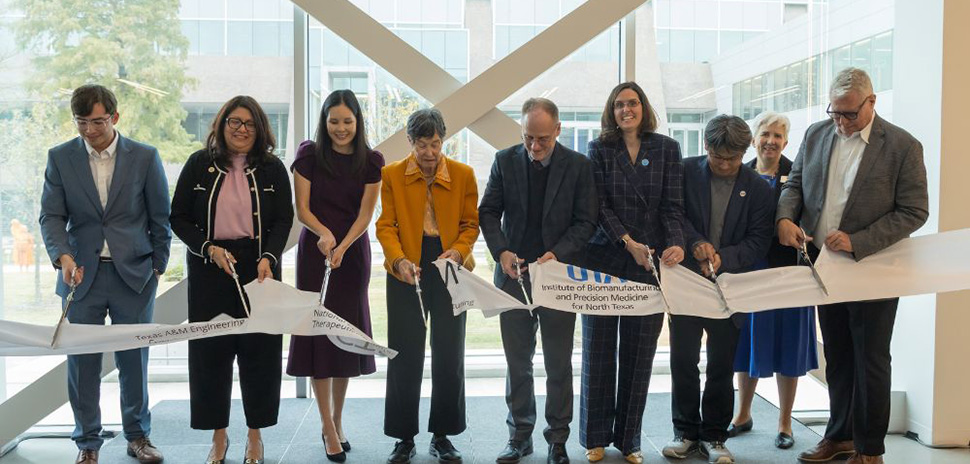Imaginuity’s Tim Langford lays it out this way: When the Soviets launched a metal orb called “Sputnik” into Earth’s orbit on Oct. 4, 1957, American scientists and educators broke out into a cold sweat and stomped on the intellectual gas.
They adopted a problem solving method called “design thinking,” which involves:
- empathizing, or deeply understanding, the problem facing people;
- defining, or articulating, the problem;
- ideating, or brainstorming, solutions;
- prototyping a working solution;
- testing that prototype—however rough—and perfecting it, or heading back to the drawing board.
Fast forward to May 9, 2019, when leaders from AT&T, BBVA Compass, Frito-Lay, Imaginuity, rewardStyle, and Toyota Motor North America gathered at the Dallas Regional Chamber to discuss how they’re applying that method to advance their companies’ missions. Langford—executive creative director at Imaginuity—provided the background defining the design-thinking method, and the panel was moderated by Imaginuity Chief Strategy and Innovation Officer Corbett Guest.
Toyota works on building a culture together
“Toyota is going through merger integration,” said Toyota Motor North America’s Tom Buttine, whose role includes incorporating design thinking into the company, which centralized its North American operations in Plano last year. “Toyota—as any big company—has a lot of different entities,” he said. Among the organizations that are being integrated are the engineering, sales, and finance divisions, he said.

Tom Buttine
“We’re working on building a culture together,” he said. “When we talked about doing design thinking, we started (by) saying, ‘The mobility consumer already sees us as one Toyota. How we start operating that way?’ ”
One example Buttine cited involved a product analyst whose job was to monitor customer demand and manufacturing capacity for a particular Toyota model. The analyst was tracking these data points via tens of thousands of lines of spreadsheets, Buttine said.
“We took him through some empathy mapping, trying to figure out how to balance what customers want, and how we best meet that,” Buttine said. “Within four weeks … we had him saving 80 hours a month” of work, Buttine said. “We also saw that (the analyst) was able to hold the sales teams accountable, because when you have transparency, you have the ability to have an equal conversation.”
Frito-Lay gives everyone ownership in problem solving
Also present was Frito-Lay North America’s head of design Jon Guerra, who said design thinking is a mindset leaders are wrapping across the entire organization.

Jon Guerra
“We feel it is really important to understand what kind of problems you need to solve,” Guerra said. He added that the design team at Frito-Lay has played an important role in helping Frito-Lay develop its “special sauce”—failing fast, working fast, maintaining relevancy, and making better decisions. That ability—enhanced by design thinking—are important in keeping Frito-Lay competitive.
Guerra said while he was involved in brainstorming sessions before at Frito-Lay, the level of buy-in for those involved in the design-thinking workshops is exceptional. A cardinal rule in design thinking is that there are no bad ideas, and there is no negative thinking.
“When you give everyone ownership, it’s a whole different ballgame, from the top to the bottom,” he said.
AT&T is setting goals and changing the culture
AT&T’s Miriam Ynocencio said the company’s design team earned a place at the table by showing the value of design thinking.

Miriam Ynocencio
“What we tried to show was the value of bringing us in early on, bringing in the researchers, bringing in insights – partnering with them, not trying to take over,” she said.
Ynocencio said AT&T has been incorporating the language of design into the corporation as well.
“Where they used to talk about ‘staffing’ and ‘resources,’ now they talk about ‘talent.’ You need to have talent in the room. You need to have design in the room.” she said, adding that AT&T is working with the University of Texas that will help students learn design thinking, so they can apply that skill to their tasks.
“You’re not going to be a designer at the end of this,” she said. “But at the end of this, you need to understand the value design thinking brings to the work that you’re doing.”
BBVA Compass: buy-in from the top
BBVA’s Don Relyea told the crowd that the leaders of the international banking firm have bought into design thinking, and they’re working to incorporate the approach organization-wide.

Don Relyea
“BBVA is a little bit different,” Relyea said. “Design thinking is championed all the way up to the chairman of the board of directors in Madrid. I was brought in three years ago to build a design team in the U.S., and to get them integrated into U.S. operations, and with some other banks in this hemisphere. We started down in Peru, where they had three designers. Now they have 30.”
Relyea said BBVA started a program called “Design Ambassadors,” which includes 3,000 professionals not in traditional design-thinking roles, who are trained in design-thinking approaches to solve issues in credit risk managers, customer service, and other areas.
“We trained them in the basics of design thinking, in solving problems together, collaborating,” he said. “And they call in the design team, when there’s something that really needs to be solved.”
Applying the method at micro and macro levels

Candy Bernhardt
“When I think about design thinking, and the design practice, I’m not only looking for an immediate outcome,” rewardStyle’s Candy Bernhardt said. “I’m thinking about a long-term competitive advantage. There are things I do with the design team, and the bigger objectives, and there are ways I facilitate a larger organization’s outcome.”
Those seeking to learn more about the role design plays in the work of companies in the Dallas Region should review the DRC’s publication “Design With a Big D.“
![]()
Get on the list.
Dallas Innovates, every day.
Sign up to keep your eye on what’s new and next in Dallas-Fort Worth, every day.





![Dr. Justin Lonon, vice chancellor of Dallas College, addresses the crowd at the recent Goldman Sachs 10,000 Small Businesses Dallas Graduation. [Photo: 10KSB]](https://s24806.pcdn.co/wp-content/uploads/2021/06/GoldmanSachs-10KSB-4992-970-970x464.jpg)


























